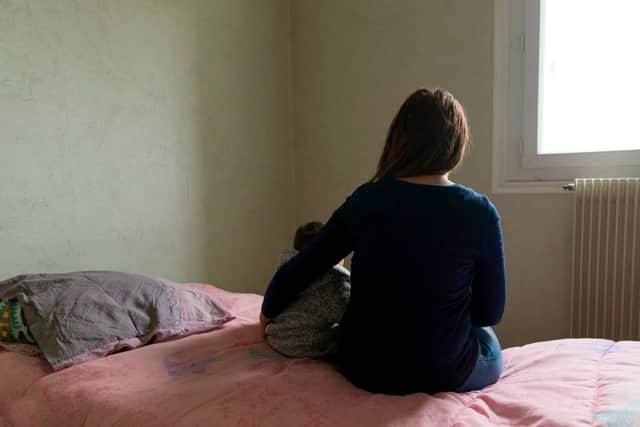Domestic abusers will be electronically tagged after leaving prison in UK government pilot to protect victims
and live on Freeview channel 276
Domestic abusers will be electronically tagged after leaving prison in a move the government hopes will better protect victims.
Under the new pilot scheme, any offender deemed to pose a threat to their former partner and/or their children will be forced to wear a GPS electronic tracking tag. This means their whereabouts can be monitored at all times, they can be banned from going within a certain distance of a victim’s home, and a curfew can be enforced.
Advertisement
Hide AdAdvertisement
Hide AdIf an offender breaches the conditions - such as by breaking their curfew or entering an off-limits zone - they can be returned to prison. Up to 500 convicts will be tagged under the pilot launching in the East and West Midlands, the Ministry of Justice has said, and more will be added when it fully rolls out across England and Wales. This is expected to happen in 2024.
Justice Secretary Alex Chalk said: “Survivors of domestic abuse show great strength and bravery in coming forward and it is right that every tool is used to protect them from further harm. The tagging of prison leavers at risk of committing further domestic violence is a further protection we are introducing to help victims rebuild their lives and feel safe in their communities.”
Louise, a survivor of domestic violence, added: “The thought of my abuser trying to make contact - either from behind bars or once released - was one that left me feeling anxious and powerless. These measures provide reassurance that we as survivors are being better protected from these efforts to intimidate and terrorise us.”


The government also announced on Friday (1 September) that recent data shows that more than 2,700 victims have been protected from harassment and intimidation by behind-bars abusers under the Unwanted Prisoner Contact Service - which was first launched last summer.
Advertisement
Hide AdAdvertisement
Hide AdUnder the scheme, offenders are unable to dial a victim’s number from prison phones or send letters to their address. Victims can report teir abusers online if they breach the rules, or have a domestic abuse charity or other support service file a report on their behalf. “This saves them from having to think about their abuser,” the government said.
Both pilots have been welcomed by Nicole Jacobs, the domestic abuse commissioner for England and Wales, who said they were a “positive step forwards in protecting victims.”
Commenting on the Unwanted Prison Contact scheme in particular, she said: “By blocking perpetrators from contacting victims, the scheme sets an important standard that the criminal justice system will not be used to further domestic abuse. This makes a difference for survivors’ safety, recovery, and freedom from abuse.
“For too long, the onus has been on victims of domestic abuse to protect themselves from harm. I will continue to work with government [to ensure this is not the case].”
Advertisement
Hide AdAdvertisement
Hide AdLabour however has criticised the goverment, saying the Tories have a “shameful record of ignoring domestic abuse.”
The party’s shadow justice secretary Steve Reed said: “This pilot is a pathetic effort to stem the rising tide of violence against women and girls that has skyrocketed on their watch.”
Comment Guidelines
National World encourages reader discussion on our stories. User feedback, insights and back-and-forth exchanges add a rich layer of context to reporting. Please review our Community Guidelines before commenting.
